A look at how waterproofing techniques and materials have evolved over the years.
Waterproofing, although often overlooked, is fundamental to the structural integrity of buildings and to ensuring the comfort and safety of inhabitants.
Since the dawn of civilisation, humans have sought ways to protect their buildings from water. As societies evolved, so did the techniques and materials used for waterproofing.
But how did we arrive at the modern techniques we know today? Let's explore the historical journey of waterproofing.
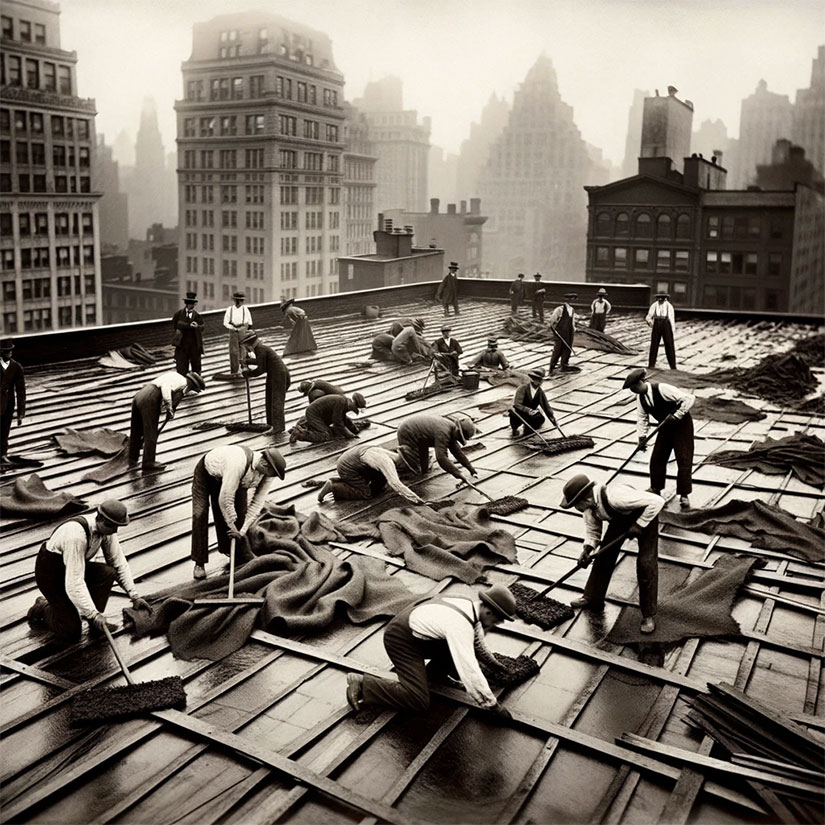
Ancient times: First Steps in Waterproofing
Ancient civilisations quickly understood the need to protect their structures from water. In ancient Mesopotamia, for example, adobe buildings were covered with layers of bitumen to repel water. The Egyptians, on the other hand, used natural resins and fats to seal ships and buildings.
Ancient Rome took waterproofing to a new level. They used opus signinum, a mixture of lime, sand and crushed pottery, to waterproof their impressive aqueducts, cisterns and thermal baths.
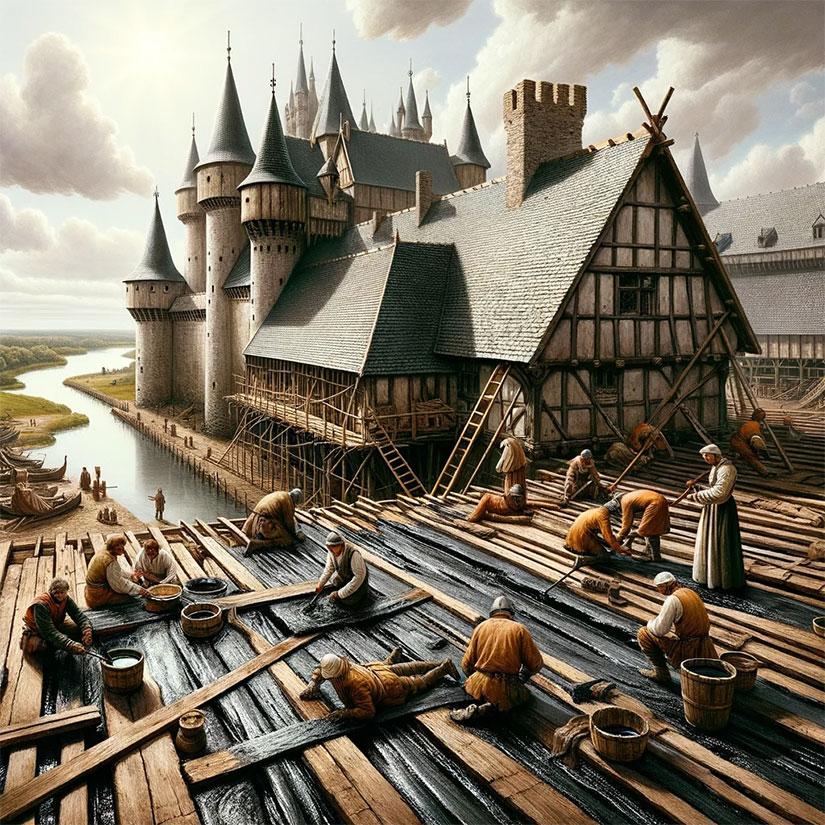
Middle Ages: Advances and Discoveries
During the Middle Ages, with the construction of great cathedrals and castles, waterproofing became an essential task. Although they lacked today's advanced technologies, medieval builders developed a number of ingenious techniques to repel water. Here are some of the most common techniques of that era:
- Gable roofs: One of the most distinctive features of medieval architecture is the gabled roof. This design allowed rainwater to run off quickly, preventing accumulation and possible seepage.
- Terracotta tiles: Terracotta tiles, overlaid in specific patterns, were essential to repel water. Their shape and layout allowed water to flow to the edges and be channelled away from the structure.
- Dense masonry: Stone or brick walls were built with a technique that minimised cracks, which in turn reduced the possibility of leaks.
- Lime and mortar: Lime was an essential component in the mortar used to bind stones and bricks together. In addition to providing a strong structural bond, lime acts as a water repellent.
- Oils and resins: Some wooden structures, such as roof beams or doors, were treated with natural oils and resins to make them water resistant.
- Gutters and drainpipes: Although more rudimentary than today's systems, medieval builders also used gutters and drainpipes to direct water away from building foundations.
- Lead coatings: In some important buildings, such as cathedrals, lead was used to clad roofs and other surfaces exposed to water. This material was particularly effective in preventing leaks.
- Raised foundations: Many buildings were built on raised foundations, which helped prevent rising damp from the ground.
- Drainage systems: In places where water tended to accumulate, drainage systems were built to channel water away from structures.
These techniques, though rudimentary compared to modern methods, were effective for their time and reflect the ingenuity and skill of medieval builders.
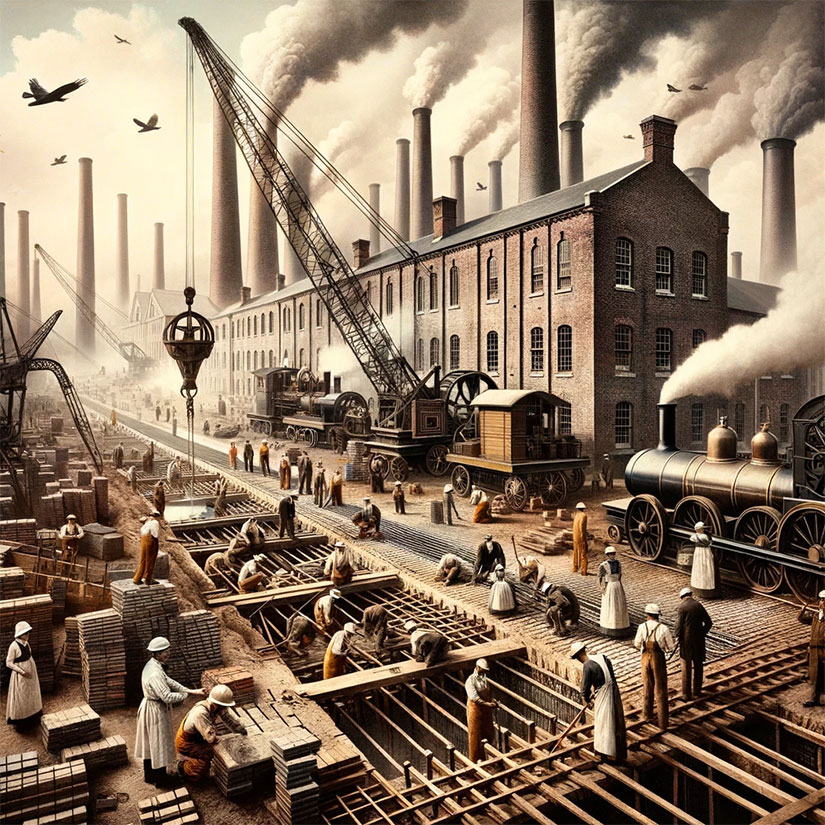
Industrial Revolution: Birth of Modern Materials
With the advent of the Industrial Revolution in the 19th century, waterproofing underwent a radical transformation. As cities grew and construction became more advanced, the need for more effective and durable waterproofing solutions arose. Below are some of the waterproofing techniques and materials that emerged or gained popularity during this period:
- Asphalt: One of the most revolutionary materials to emerge during this period was asphalt. It was used on roads and also roofs and other surfaces to provide a waterproof barrier.
- Asphalt sheets: These are felt or glass fibre based membranes impregnated with asphalt. They were mainly used for roofs and terraces, offering protection against leaks.
- Rubber: With the development and industrial production of rubber, flexible waterproofing products emerged that could be used on various surfaces.
- Waterproof paints and coatings: The mass production of paints and coatings with waterproofing properties became popular. These products were used on walls, ceilings and other surfaces to repel water.
- Portland cement: Although cement was already known, Portland cement, patented in the 19th century, offered greater strength and durability. Its ability to harden even under water made it invaluable in underground and marine construction.
- Galvanised iron: Galvanisation involves coating iron or steel with a protective layer of zinc, protecting it from corrosion and thus from water damage.
- Lead and zinc: These materials were used on roofs, gutters and downpipes, providing a durable and waterproof solution.
- Improved drainage systems: With the growth of cities and the need to manage large amounts of wastewater and stormwater, more advanced drainage systems were developed.
- Synthetic materials: As chemistry advanced, new compounds and polymers emerged that offered waterproof solutions.
- Laminated glass and sealants: The production of laminated glass and the use of advanced sealants allowed the construction of buildings with large glass surfaces without compromising watertightness.
These innovations emerged in response to the changing demands of a rapidly developing society. The ability to mass-produce materials and innovations in chemistry and engineering led to more advanced and effective waterproofing solutions than those available in earlier periods.
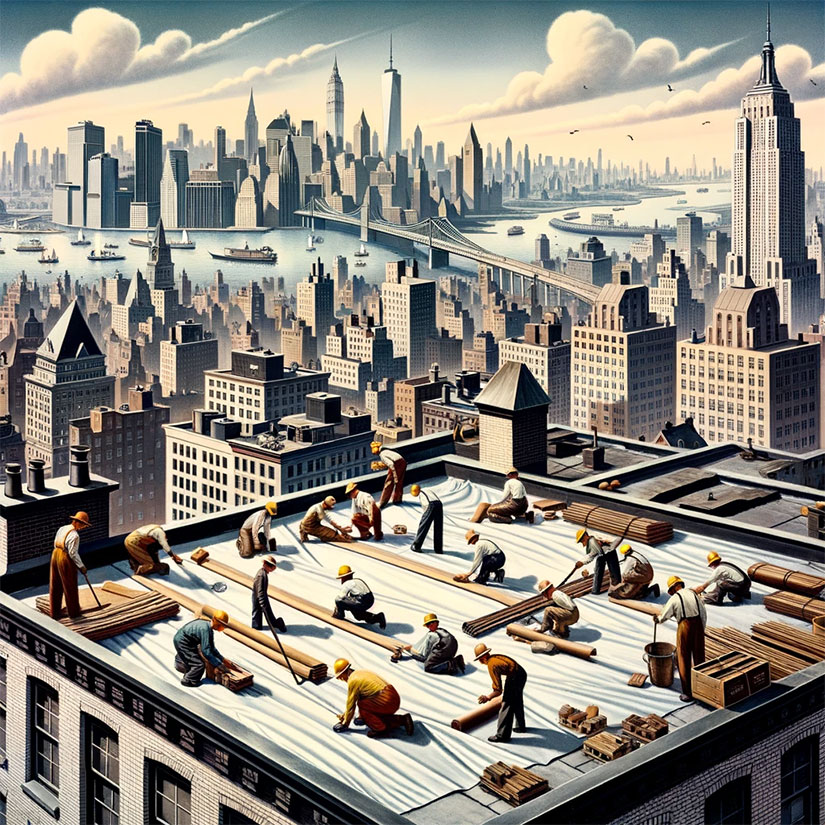
20th century: Innovations and Advanced Technologies
The 20th century saw a boom in research and development of building materials and techniques, including waterproofing solutions. The increasing demands for modern infrastructure and the new technologies available led to a number of innovations in this field.
- EPDM membranes: EPDM (ethylene propylene diene monomer) is a type of synthetic rubber that is widely used as a waterproofing membrane, especially in roofing. It is known for its durability and resistance to UV rays and extreme weather conditions.
- PVC and TPO membranes: These plastic membranes offer excellent water resistance and are widely used on roofs and terraces. They are flexible, UV-resistant and have a long service life.
- Liquid membranes: These are products that are applied in a liquid state and then harden to form a continuous waterproof membrane. They can be based on polyurethane, polyurea, acrylics and silicone, among others.
- Geotextiles: These are synthetic fabrics used in civil engineering for separation, filtration and drainage, and have waterproof properties.
- Bentonite: A type of clay that expands when wet, forming an impermeable barrier. It is used in the form of impregnated panels or geotextiles for waterproofing foundations and basements.
- Crystalline polymers: These are admixtures that are mixed with concrete and react chemically to form waterproof crystals in the pores of the concrete, making it water resistant.
- Self-adhesive membranes: These membranes come with an adhesive on one side and adhere directly to the surface being waterproofed.
- Polyurethane foams: These foams are sprayed on the surface and expand, forming a waterproof and insulating barrier.
- Resins and epoxies: These products are used to waterproof surfaces and also to repair cracks and joints in existing structures.
- Modern sealants: The development of silicone, polyurethane and other polymer sealants greatly improved our ability to seal joints, cracks and penetrations in structures.
- Drainage technologies: More advanced drainage solutions, such as drainage panels and underground drainage systems, were introduced to protect underground structures from water pressure.
These innovations reflect the rapid evolution of technology and engineering during the 20th century. With the growth of cities and the demand for taller buildings and deeper basements, waterproofing solutions had to constantly adapt and improve to meet these new challenges
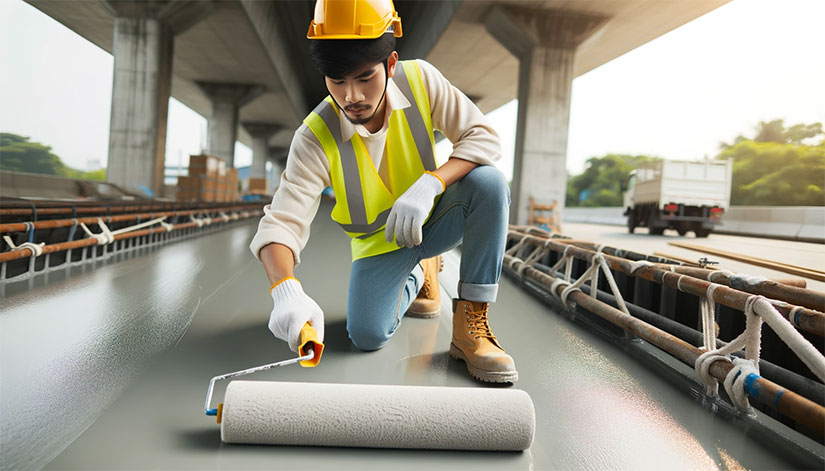
Today: Moving Towards Sustainable Waterproofing
In the 21st century, waterproofing plays a crucial role in the protection and durability of structures. Over the past decades, the industry has constantly searched for more effective and versatile solutions to meet this challenge. In this context, polyurea and polyurethane liquid membranes have emerged as leaders, establishing themselves as preferred options in many modern projects.
Polyurea and polyurethane liquid membranes are coatings that are applied in a liquid state to a surface and, after a curing process, are transformed into a solid, elastic layer that protects against water infiltration. These products combine the chemical properties of polyurea and polyurethane, resulting in highly resistant, flexible and durable membranes.
Part of this success is due to the many advantages of its use:
- Fast Application: One of the major advantages of these membranes is their fast curing time. Depending on the formulation and environmental conditions, some can be cured in a matter of seconds.
- Flexibility: These membranes have excellent elongation properties, allowing them to adapt to structural movements, expansions and contractions without cracking.
- Adherence: They adhere firmly to a wide variety of substrates, from concrete to metal, ensuring complete protection.
- Durability: They are resistant to abrasion and chemicals, giving them a long service life.
- Seamless application: As they are liquid, they form a continuous seamless membrane, eliminating weak points where leakage could occur.
With the increasing demand for efficient waterproofing solutions, we are seeing more and more adoption of polyurea and polyurethane membranes. In addition, constant innovations in formulation and application techniques will further expand its efficiency and range of use.
In conclusion, polyurea and polyurethane liquid membranes represent a revolution in modern waterproofing. Their ability to offer long-lasting protection in a wide range of applications has established them as one of the most reliable and versatile options available on the market today.
The history of waterproofing is a testament to human ingenuity and its ability to adapt to the challenges of its environment. From the simple resins and clays of ancient times to the advanced systems of today, waterproofing has come a long way, protecting our buildings and improving our quality of life. With the challenges of climate change and urbanisation, the importance of effective waterproofing will only continue to grow in the future.





